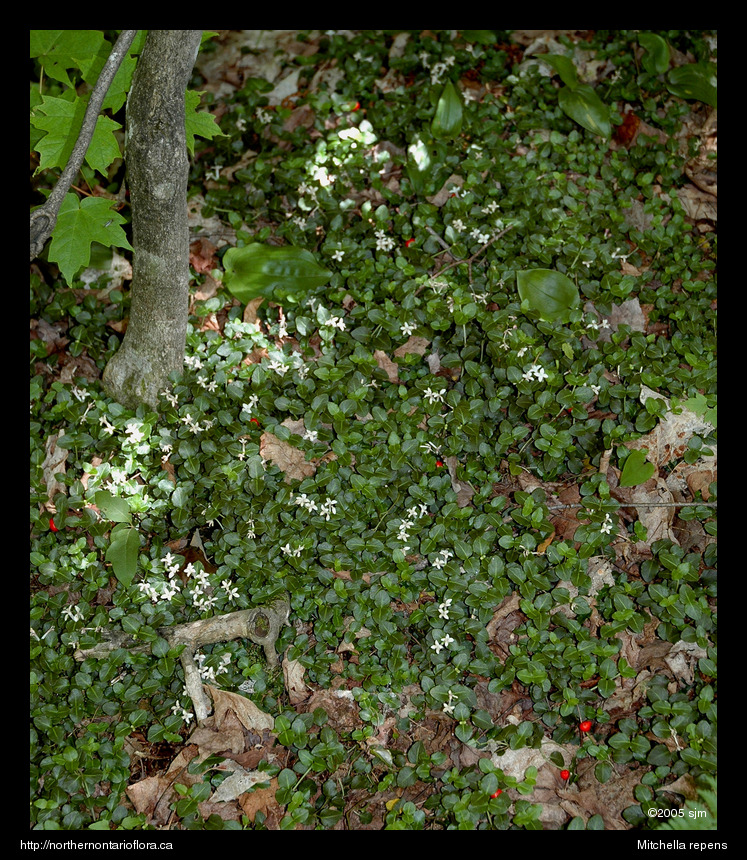
|
Northern Ontario Plant Database 
Plant DescriptionMitchella repens L.En: two-eyed berry (NF), partridgeberry
Rubiaceae (Madder Family) General: A low, trailing evergreen perennial forb; stems 1–3 dm long, rooting at the nodes, often forming extensive colonies. Leaves: Opposite, simple, evergreen, pinnately-veined, coriaceous, smooth (glabrous), petiolate. Leaf blades ovate to rounded (orbicular), 1–2 cm long; upper surface dark green, with a silvery-white line along the midrib; the base rounded to slightly cordate; apex blunt to rounded; margins entire. Flowers: Bisexual, white to pale pink, fragrant, occurring in pairs at the end of small branches, or sometimes in the leaf axils; pedicels _ cm long. Calyx small, with 4 small triangular lobes; corolla tubular, 1–1.4 cm long, with 4 (rarely 5) spreading, elliptic to ovate lobes, the corolla heavily bearded inside; stamens 4, attached at the throat of the corolla; pistil 1, but with the inferior ovaries of 2 paired flowers fused into a single ovary. Flowers occur in two forms (dimorphic); one with short stamens and a long style that extends beyond the corolla lobes; the second with a short style included within the corolla tube and long stamens. Flowers bloom in early summer. Fruit: A small, red, globose, berry-like drupe, with 4 small pits in each half of the fruit, smooth (glabrous), 5–8 mm in diameter. The fruits are edible but lack taste; the small, triangular calyx lobes of the paired flower are persistent at the top of the fruit, forming the two-eyes noted in the common name "two-eyed berry". Fruits mature in late summer and remain on the plant over winter. Habitat and Range: Dry to moist, rich deciduous and mixedwood forests. Mitchella repens is native to eastern North America; it extends as far north as the Batchawana area (Algoma District) in northern Ontario. Internet Images: The Mitchella repens webpage from the Gallery of Connecticut Wildflowers, a website of the Connecticut Botanical Society. See additional images of Mitchella repens from Andy's Northern Ontario Wildflowers website. Similar Species: Linnaea borealis (twin flower), has long trailing stems and opposite leaves, but it can be distinguished by the toothed margins of the leaves; also, its flowers share a common stalk, which splits into two separate stalks well below the flowers. Compare partridgeberry to the Linnaea borealis webpage from the Gallery of Connecticut Wildflowers, a website of the Connecticut Botanical Society. Back to species list |
||||||||||||||||||||||












